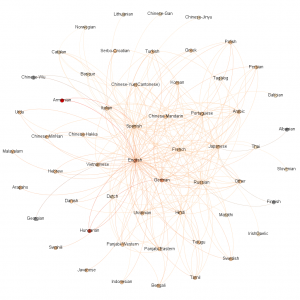Below is a list to the notes of past trainings we’ve done in the Willoughby that are likely to be useful for those considering or starting in the digital humanities.
- Blogs, RSS & Collaborative Writing – If you’re new to Web 2.0 tools such as blogs, rss readers and Google Docs this is a good place to start.
- Google Earth and an Introduction to Spatial Literacy – Overlay maps with data or other information, this can be historical data, significant places in literature, etc. Google Earth is simple and easy to use. For more advanced projects Jim Ciarrocca in Academic Technology with introduce you to the ArcGIS software.
- Visualizations – Includes networks, timelines, and word trees. Newer tools allow anyone with a basic understanding of Excel to create effective visualizations.
- Scholarly Communication – Introduces changes in scholarly publishing and communication. Pay especial attention to Zotero at the end of the notes.
- Copyright and Open Content – What rights do you have for re-purposing content on the web, and where to find resources that provide more generous rights to educators.
